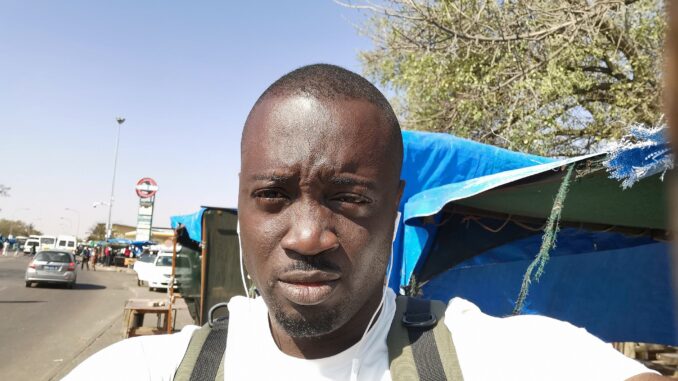
I started making plans to visit Namibia over a year ago. I was super impressed when I learnt that a branch office of the Namibian Airlines located in Ikeja here in Lagos could help me process the visa and not require me to fly to Abuja as most embassies based in Abuja will always do.
The previous year, I had planned to visit Namibia, Zambia and Zimbabwe. I had applied for visas for these countries but I succeeded with the visa for Namibia. Zambia and Zimbabwe were denied, maybe because I made the application online. There was no reason for the visa denial in both cases, but I was told by a Zimbabwean friend after some months of the failed application that Zimbabwe is wary to giving visas to Nigerians, I assumed the same was the case for Zambia as well.
Due to budget and the fact I would not want to spend a lot for a single destination, I had to postpone this trip to Namibia.
I had just learnt of a new visa policy in Botswana that allows Africans to receive visas on arrival. This renewed my desire to visit the country and region. During this period, I learnt of an African Union Education sponsored event in Gaborone, Botswana. The event was aimed to promote the use of Technology in the education sector in Africa. I thought it would be a very good time to visit since I am into technology and the platform would be a very great opportunity to meet other young people who are working hard to promote education using technology in Africa.
My application to participate at the event in Gaborone was approved, however, there was no sponsorship in anyway which was still a good idea. It meant I would have to pay for my flight, visa, accommodation and other expenses. A couple of friends showed interest to travel with me for this event but eventually, only one of them, Chris was the only one who was able to embark on it with me.
For the visa processing this time, since I had my passport with someone in Abuja, I him to drop it off at the Namibian Embassy for a tourism visa. Namibia should be one of the countries in Africa whose visa is cheap – it was around $35 USD at the time.
After a few back and forth with the consular officers in Abuja who requested I should pay for my hotel reservations before I am given the visa. He explained that people had been turned back for reasons as little as not having a reservation booked before their trip. At a point, I had to make contacts with the ambassador at the time whom I met in Lagos at a function. My visa was approved without further delays.
My plan was to visit Botswana and then from there, I would visit Namibia and then return to Botswana for the event before coming back to Lagos where I live.
Prior to this visit, the African Union (AU) had sent me a letter of invitation which I will be authorizing my visa on arrival in Gaborone. It was also a directive to the South African authorities who might have a problem if my flight stopped over in Johannesburg. It is always a good idea to have a letter of invitation from someone or an organization or even an invite to an event before traveling to a country where you would be receiving visa on arrival.
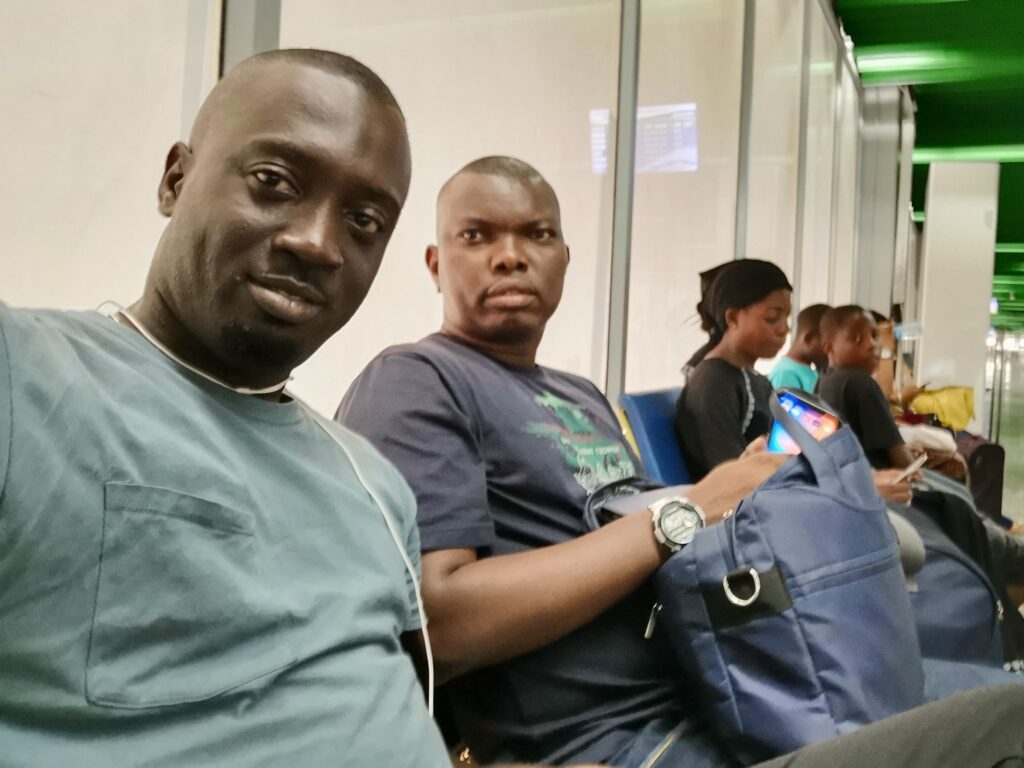
Having gathered everything needed, Chris and myself left for this trip. The plan was to travel on a Friday evening and arrive Gaborone Saturday. I would then leave for Windhoek, Namibia the next day (Sunday) to return on Tuesday morning when the event would start. We would leave Gaborone on Saturday back to Lagos.
We had got a cheap ticket from Asky, a Togolese airline. I had flown with them from Douala to Libreville a few months ago and their services were not bad, even though I had a few reservations about this particular service. Our plane was delayed briefly but we eventually left.
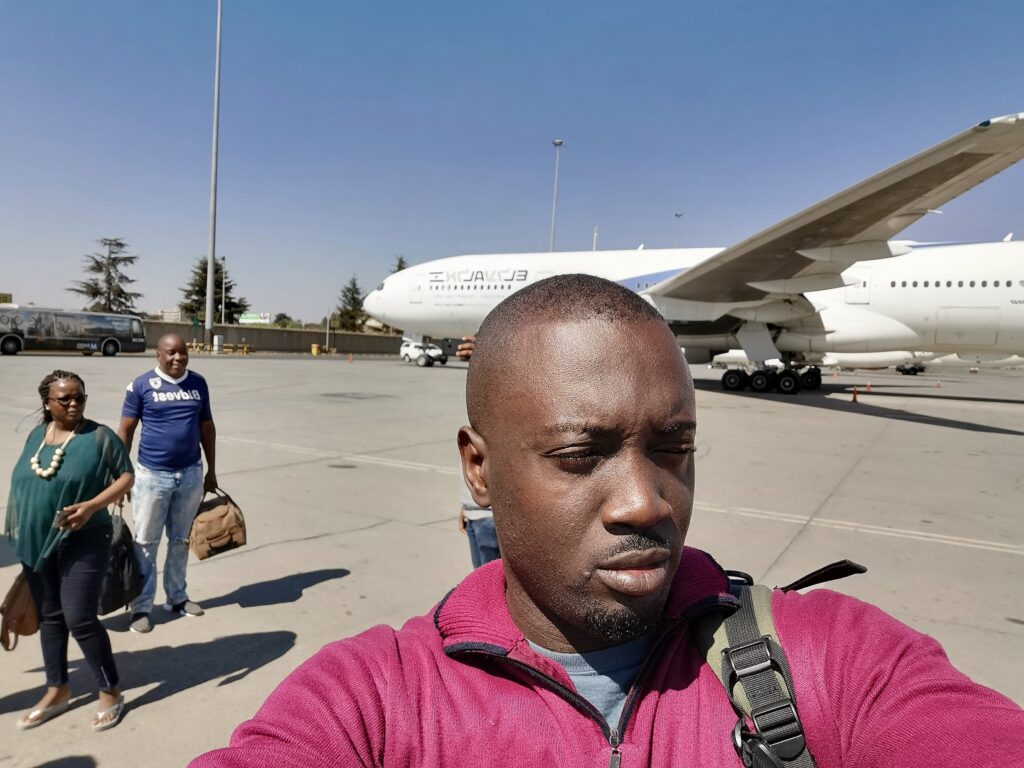
We flew to Douala first, then took off to Johannesburg. The next morning, we switched to a smaller plane belonging to Air Botswana which flew us to Gaborone.
One thing about the OR Tambo airport in Johannesburg is the fact that there are so many airlines flying to that destination. Name them: El Al of Israel, Singaporean Airlines, Air Mauritius, TAAG Angola and several other airlines. It’s always fun seeing some of these planes belonging to a few carriers which am yet to fly with.
Leaving the Johannesburg, we flew on this small Botswana Airline plane to Gaborone. We received a visa on arrival for $150 which I think it is high for an African destination – even though Gabon cost twice of that. One important thing is that they would require you to pay for the visa in local currency – they would show you a place in the airport where you can change cash to local currency. You also have the option of using the ATM which would charge an extra 30 Pula as charges. (I would recommend using the ATM and withdrawing more cash. The Bureau de Change at the airport would charge more commission for the exchange).
At the airport, we were advised that a taxi to the town would cost at least one hundred Pula to get to town (100 Pula = $10 USD). We made a hotel reservation in a place called Oddi which is a border town with South Africa. We stepped out of the airport and we were fortunate to get a taxi which charged us only 70 Pula to get us to our guest house in Oddi. We later learnt that we could have paid as much as 150 Pula if we had taken an airport taxi. This gentleman that picked us up, Ishmael was with us during our entire trip in Botswana.
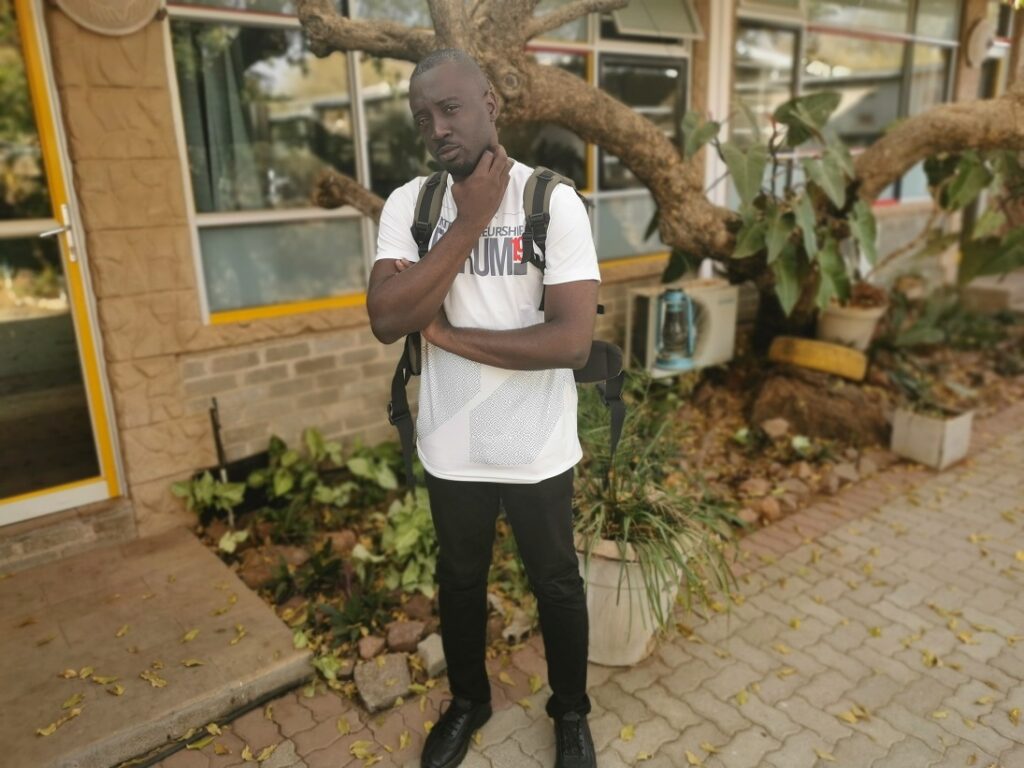
Gaborone is a very beautiful city. At the time we visited, it was dry season. Drought and lack of rainfall made the entire country look parched when looking from above the plane. The country has a reasonably good infrastructure. Good roads, running water, electricity and other good things of life.
Oddi, the town where we lodged was some 15 minutes’ drive from Gaborone. Our lodging was somehow located inside the village but it was good for the price. We had a kitchen which implied we could prepare our own food. There was a local shops close by where we purchased several of the things we prepared to eat. For some of you who are particular about the taste of your stew, avoid using the local tomato paste – because it tastes like sugar was added to it. It is better to travel with the paste you are used to than buying something different from what you are used to. You could also buy fresh tomatoes but those are very expensive.
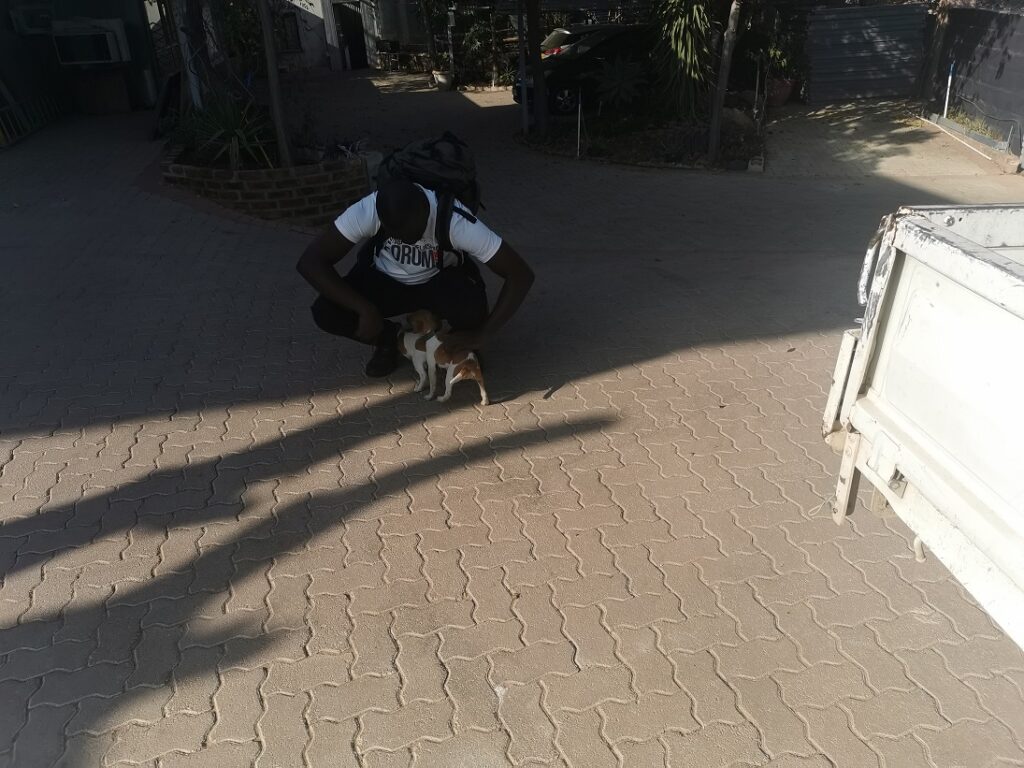
The owner of the Guest House we stayed in is a white South African who told us he would be receiving his Botswana citizenship in a few months from then. He told us stories of how he bought in the property several years ago and how he was mocked for buying a very rocky property and they wondered how he would be able to develop it. Good a thing, he was able to build something of that magnitude. He had a very friendly dog with two puppies – which would eventually would be grown by now but they were part of the things that made my stay memorable in his property
The next morning, was a Sunday morning. All was set for me to leave to Windhoek, meanwhile, Chris had perfected plans to worship at a local branch of The Winners Chapel in Gaborone. We both left that morning – Chris to church and myself to Gaborone Bus Ranks to find my way to Windhoek.
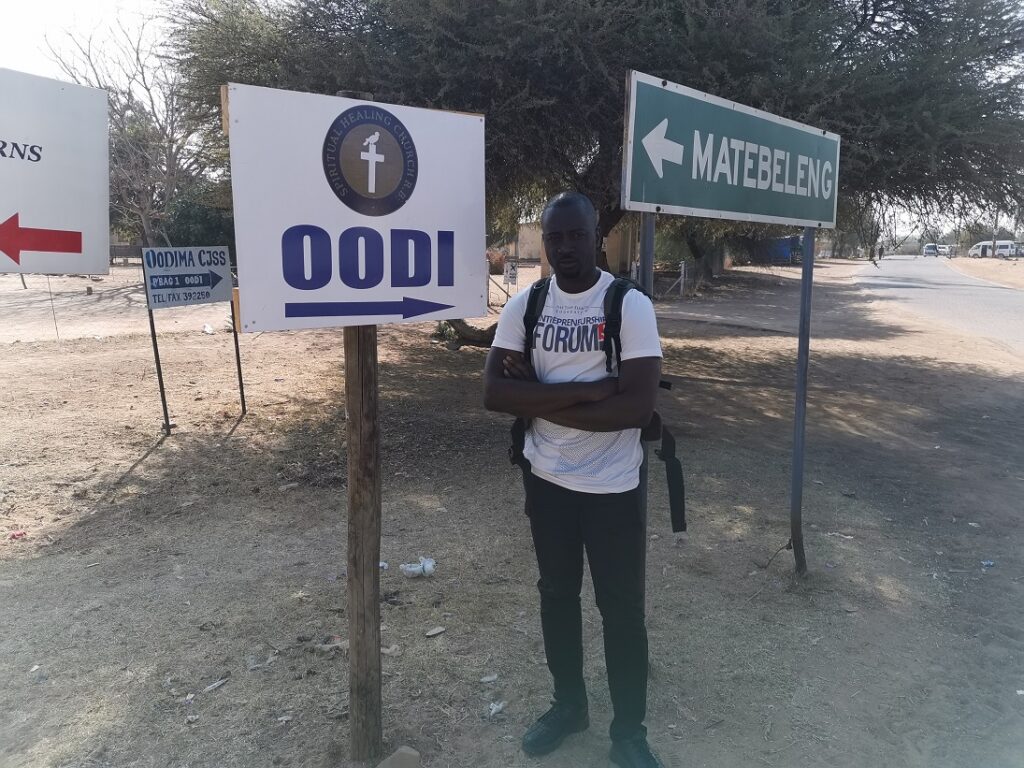
The Oddi Bus Park was a 7-minute walk from our lodge. My normal way of getting around town is to ask the locals. First, it saves me a lot that I pay to taxis and secondly, it somehow allows me to do things the way locals do it and affords me a very nice opportunity to interact with the locals. We boarded a bus from the Oddi Bus Park to Gaborone Bus Ranks. Chris had to stop at one of the junctions from where he would be taking another bus to his church while I would be following the vehicle to the final destination from where I would be finding another bus to Windhoek.
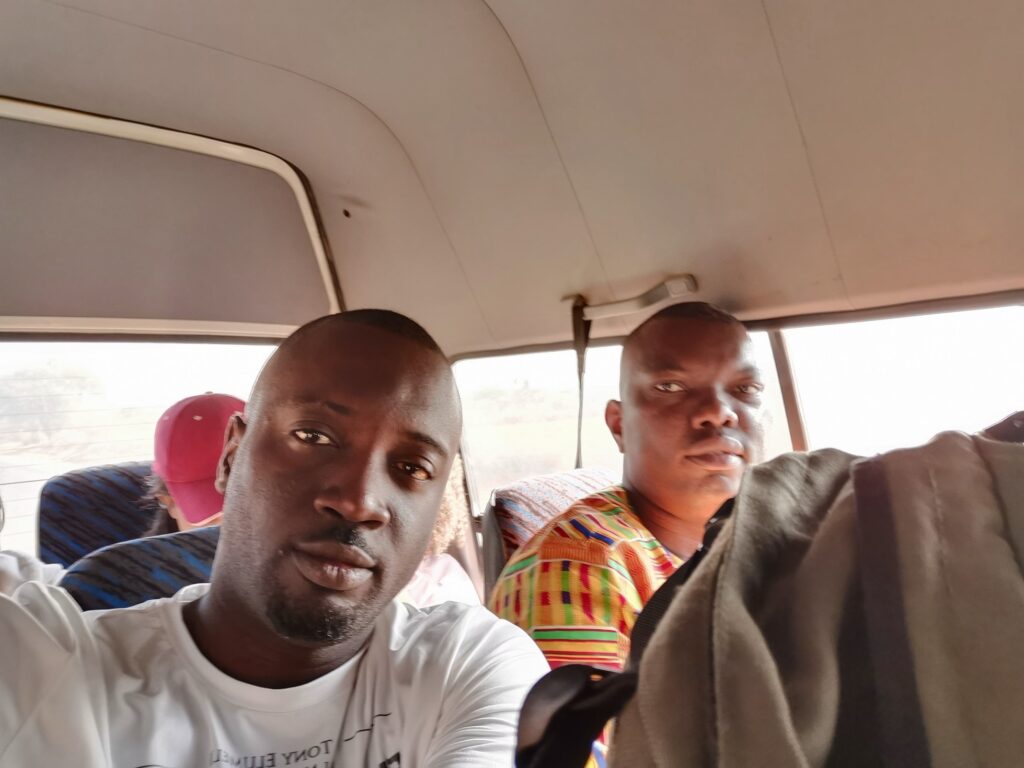
Public vehicles from the Gaborone Bus Rank to Gaborone leaves on Fridays and Sundays as early as 7am so they could arrive on time. Unfortunately, I arrived there at around 8:30 am and the buses had already left. In the process of locating which bus exactly to take, I ran into a young man that worked nearby, Tevin. He was very helpful and eventually helped me to get a vehicle that was Kang bound.
This Tevin also took me to a local restaurant where I had breakfast. During the breakfast, some of his friends joined us and when he mentioned I was from Nigeria, one of them eating with us screamed Chinekeee! a word in my native language which translates to God. She was probably trying to let me know she watches lots of movies from Nigeria also known as Nollywood. She told me her love for movies from Nigeria and she spoke of her favorite actors and movies as well.
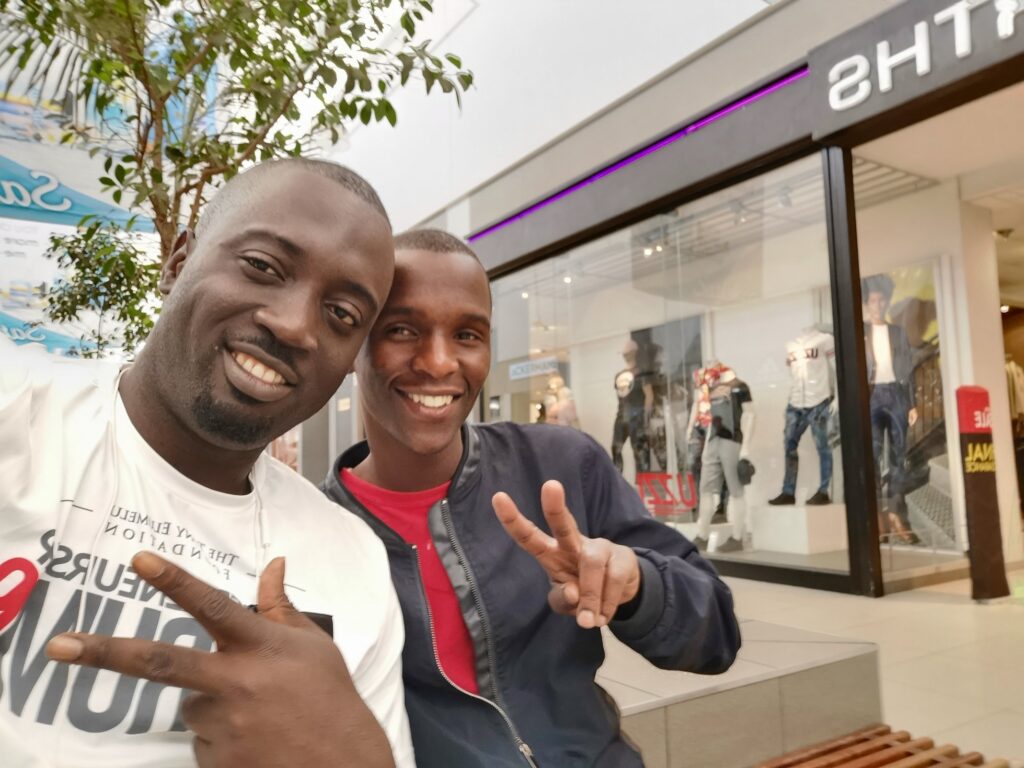
One thing that I have noticed in most of the sub-Saharan Africa is the love for Nollywood movies – both in Francophone and Africa. In general, lots of movie industries has sprung up in Africa depending on which country they are located. We have the Ghollywood in Ghana, the Follywood in Francophone West Africa especially in Burkina Faso. These movie industries have provided lots of jobs and above all, has been a great source of entertainment to the people of the continent and beyond.
At the Bus Rank, there were still vehicles going to Harare and Lusaka and interesting enough, these vehicles were still waiting for passengers. I was a bit jealous because I had planned to visit these two cities and I was denied the visas when I applied for their visas earlier. It was one of those time I really wished that Africa had a single passport and that the need for visa was completely eliminated – but that might remove some fun from the trips for me because I somehow look forward to the ‘ill treatment’ I would receive for traveling with a Nigerian Passport and fun associated with applying for visa and get it approved or rejected.
Transport fares for my destination costs between P250 to P300 (Two Hundred and Fifty Pula to Three Hundred Pula). Since I could not get a bus, I paid P130 to Kang. The exchange rate as at the time I embarked on this trip was at a $1 USD to P10.

We left for Kang at around 10am and arrived around 3pm in the afternoon. The journey was long and exciting. I did not sleep of course and there are quite a lot of things to see on the Trans-Kalahari Corridor. According to the Global Infrastructure Connectivity Alliance, the Trans Kalahari Corridor (TKC) is a road network spanning approximately 1900 kilometers across the territories of Botswana, Namibia and South Africa. It starts in the Gauteng Province in South Africa and continues through Rustenburg and Zeerust in the North-West Province, through Lobatse and Kanye in Botswana, the Mamuno and Trans Kalahari Border Posts, through Gobabis, Windhoek and Okahandja in Namibia and right through to the Port of Walvis Bay.
The TKC cuts the distance between southern Namibia to South Africa’s Gauteng by 400 kilometers, and provides a short transport link across the entire breadth of the South African Sub-continent, reducing logistical costs to users.
The road is replete with diversities of wild animals. The Ostriches, wild horses, donkeys etc. were all seen on the road. We travelled pass the Jwaneng Diamond Mine (pronounced Jwanee) which happens to be one of the biggest Diamond mine in the country. Diamond happens to be one of the biggest exports of the country. Asides from other solid minerals, one other big export is beef.
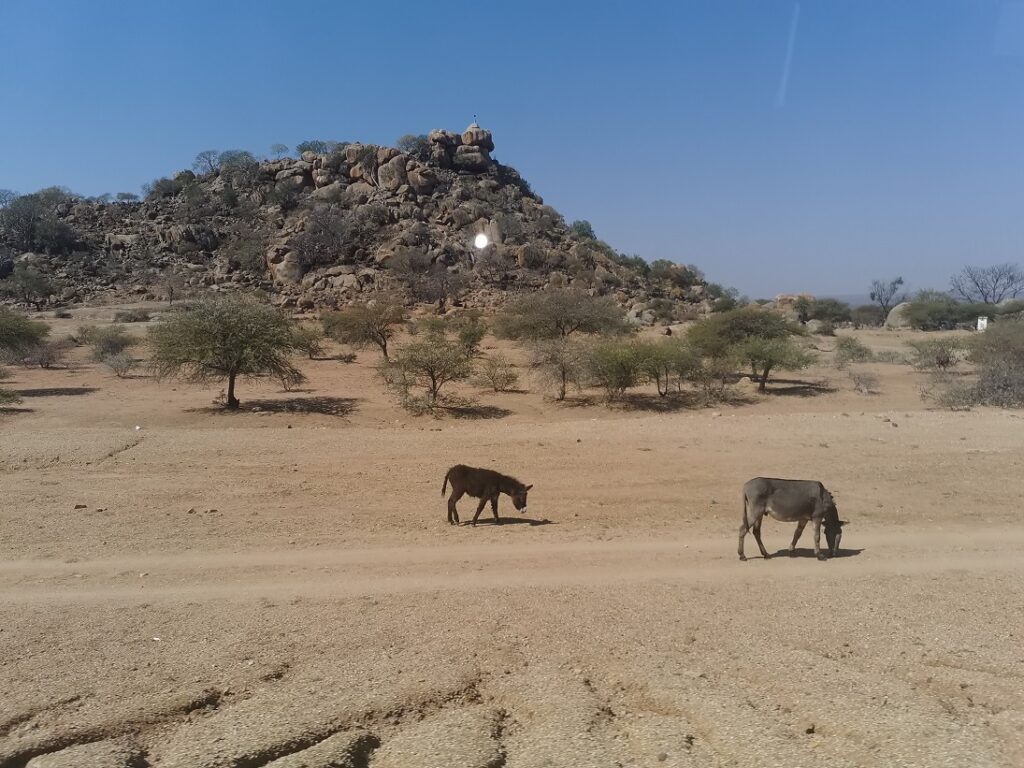
At Kang, I did as I was advised which was to wait for a Namibia bound truck. Fortunately, a large truck pulled by and agreed to take me and one other passenger who was headed the same direction but not to Namibia.
Ernest is the driver of this truck. He works for a multinational haulage country based in Gaborone. The country is landlocked. Imports like cars and other heavy duty equipment are shipped in from neighboring countries like Namibia and South Africa. Ernest’s company deals on transporting shipped cars from Walvis Bay in Namibia to Gaborone, Botswana and other places in the country.
The journey was long but entertaining. Ernest was a very good company. He’s also a very kind guy. Apart from the fact that he did not request for any fares for the entire trip, he shared some of the food he had and even offered for me to travel back to Gaborone with him. Some friends who saw the picture we took together suggested we are look likes. For the records, I asked him what I would pay him and he turned it down.
The other passengers with us stop at a place named Mile 44 on the Trans Kalahari, he was headed to a town called Ghanzi which was off the Trans Kalahari route.
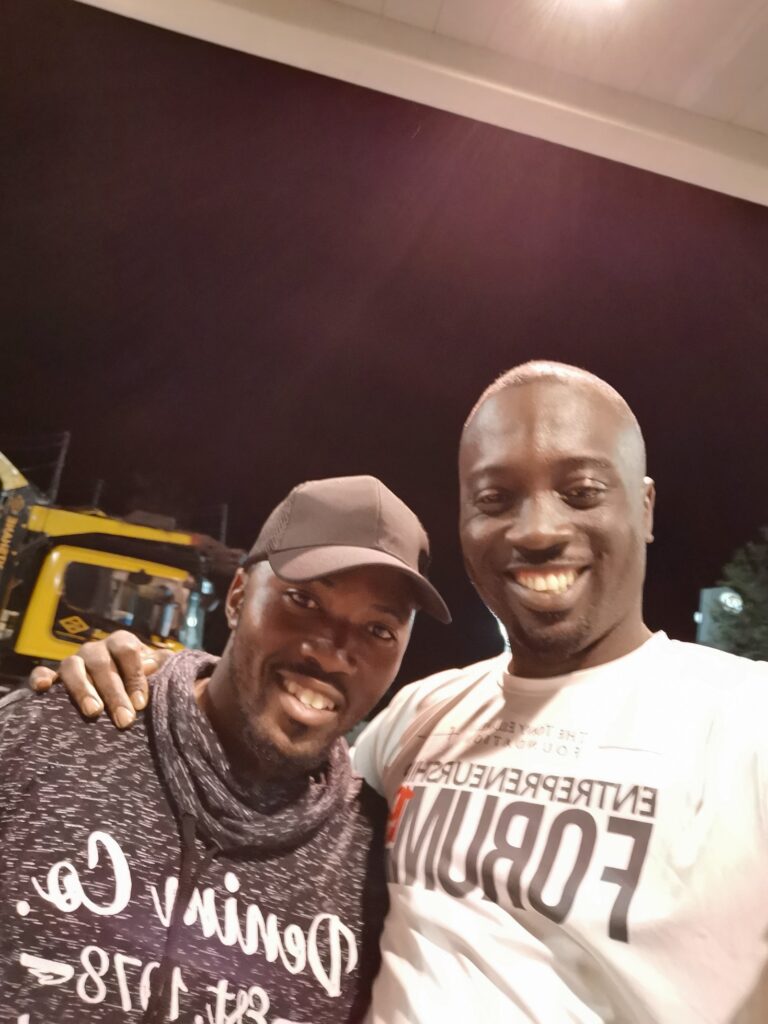
We had to make one or two stops to refuel the truck, buy refreshments and use convenience before we approached the Namibian border.
At the border, the officials only allowed each truck to cross with only one passenger. The process for allowing trucks to travel across the border is a bit complicated. Each truck is weighed and they are charged based on the weight of the vehicle.
The immigration process at this border too was not difficult, even though I was nervous – not knowing how they would behave and taking my mind back to what happened when I went to pick up my passport from the Namibian Embassy in Abuja. The consular officer told me a lot about people who were denied entry into Namibia for reasons as little as not having a reservation and so on. I was ready for anything but the immigration officer, who was visibly weak from stress during the day that evening only asked why I was visiting. I told her I was only going to see Windhoek and other cultural heritage of Namibia – seeming a bit satisfied with my answer, she stamped and allowed me go. I still insist as I have always done before that tough immigration hurdles are best jumped at night.

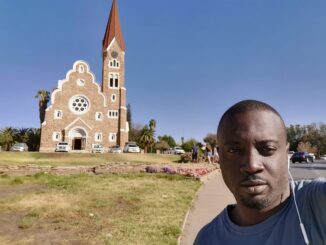

Wow……what a friendly human being @ Ernest